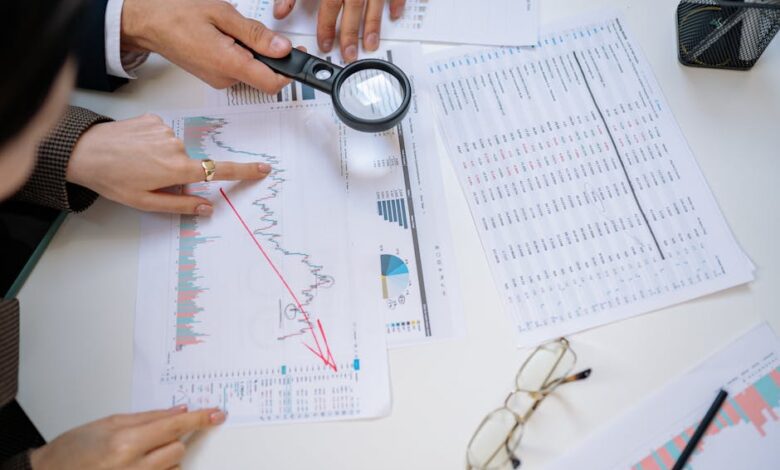Metals in Motion: Analyzing Market Trends, Investment Strategies, and the Future of Resources

In an era marked by rapid technological advancement and shifting economic landscapes, the dynamics of metal markets are more crucial than ever. This article delves into the multifaceted roles of various metals, highlighting their significance not only as industrial commodities but also as investment vehicles. We will explore silver's dual function in both sectors, examine how copper prices serve as a barometer for global economic health, and assess the burgeoning demand for rare earth metals driven by green energy technologies. Additionally, we will compare platinum and palladium as investment options, discuss the importance of metals in portfolio diversification, and analyze the effects of inflation on precious and industrial metal prices. Finally, we will consider the future of aluminum within a sustainable economy and the implications of mining regulations on metal prices. By understanding these interconnected themes, investors and industry stakeholders can better navigate the complexities of the metal markets and make informed decisions in a rapidly changing world.
- 1. **Navigating the Metal Markets: Understanding Silver's Dual Role in Industry and Investment**
- 2. **Copper as an Economic Barometer: Analyzing Price Movements in a Global Context**
- 3. **The Green Revolution: How Emerging Technologies Shape Demand for Rare Earth Metals**
1. **Navigating the Metal Markets: Understanding Silver's Dual Role in Industry and Investment**
Silver plays a unique and multifaceted role in both industrial applications and investment markets, making it a vital metal in the global economy. On the industrial side, silver is prized for its exceptional conductivity, thermal properties, and antibacterial qualities. It is extensively used in electronics, solar panels, medical devices, and various chemical processes. The growth of emerging technologies, particularly in renewable energy and electronics, has led to an increase in industrial demand for silver, which can influence its market price significantly.
In the investment realm, silver is often viewed as a safe-haven asset, similar to gold. Investors turn to silver during times of economic uncertainty or inflationary pressures, as it can provide a hedge against currency devaluation. The metal's relatively lower price compared to gold makes it an accessible option for individual investors. Additionally, silver has a historical precedent as a store of value, which further solidifies its appeal in investment portfolios.
The dual nature of silver means that its prices can be influenced by both industrial demand and investment trends. For instance, when economic growth is strong, industrial demand may drive prices higher. Conversely, during economic downturns or periods of high inflation, increased investment demand can also elevate prices. This interplay creates a dynamic market environment where investors must stay informed about both economic indicators and technological advancements that could impact silver’s industrial usage.
Understanding these dual roles is essential for navigating the metal markets. Investors need to consider not only the current demand from industries but also the broader economic landscape and investor sentiment. By recognizing silver’s unique position, investors can make more informed decisions, balancing their portfolios with this versatile metal, which plays a critical role in both technological innovation and financial stability.
2. **Copper as an Economic Barometer: Analyzing Price Movements in a Global Context**
Copper is often referred to as "Dr. Copper" due to its historical role as a reliable indicator of global economic health. This nickname stems from its widespread usage across various industries, including construction, electronics, and manufacturing, making it sensitive to shifts in economic activity. When economies are thriving, demand for copper typically rises, leading to price increases. Conversely, during economic downturns, demand diminishes, resulting in lower prices.
Recent price movements in copper have reflected broader global trends. For instance, during the COVID-19 pandemic, prices initially plummeted as manufacturing halted and construction projects were delayed. However, as economies began to recover and stimulus measures were implemented, copper prices surged. This rebound was fueled by increased infrastructure spending, particularly in major economies like the United States and China, both of which are significant consumers of copper.
Geopolitical factors also play a crucial role in copper price fluctuations. Trade tensions, supply chain disruptions, and changes in mining regulations can all influence availability and pricing. For example, labor strikes in major copper-producing countries, such as Chile and Peru, can lead to immediate supply shortages, driving prices higher.
Moreover, the transition to green energy technologies—such as electric vehicles and renewable energy systems—has created additional demand for copper. These technologies require substantial amounts of copper for wiring and components, further intertwining copper prices with the trajectory of global economic policies aimed at sustainability.
In summary, copper prices serve as a barometer for global economic health, reflecting not only current demand but also future expectations. Investors and analysts closely monitor these price movements, as they provide valuable insights into the state of the global economy and potential investment opportunities.
3. **The Green Revolution: How Emerging Technologies Shape Demand for Rare Earth Metals**
The Green Revolution is fundamentally reshaping the global demand for rare earth metals, driven by the rapid advancement of emerging technologies and a heightened focus on sustainability. Rare earth metals, which include elements such as neodymium, dysprosium, and lanthanum, are essential for manufacturing high-performance magnets, batteries, and various electronic components critical for green technologies.
As the world increasingly shifts towards renewable energy sources, the demand for rare earth metals has surged. For instance, the production of electric vehicles (EVs) relies heavily on rare earth elements for their batteries and electric motors. The International Energy Agency (IEA) projects that the share of EVs in the global automotive market will continue to grow, significantly increasing the demand for these metals.
Moreover, the expansion of wind energy technology also contributes to the rising need for rare earths. Wind turbines utilize neodymium-iron-boron magnets, which are pivotal for their efficiency and performance. As countries strive to meet ambitious climate targets and transition to cleaner energy sources, the reliance on rare earth metals in wind turbine production is expected to rise.
Additionally, advancements in energy storage technologies, such as lithium-ion batteries and solid-state batteries, are further propelling the demand for rare earth elements. These innovations are critical for stabilizing energy grids that incorporate intermittent renewable energy sources like solar and wind, enhancing the overall efficiency of energy systems.
However, the supply chain for rare earth metals poses challenges, as most of these resources are concentrated in a few countries, particularly China. This concentration raises concerns about supply security and geopolitical risks. Consequently, nations are investing in domestic production and recycling technologies to mitigate these risks and ensure a stable supply of rare earth metals.
In summary, the Green Revolution is driving an unprecedented demand for rare earth metals, fueled by the transition to renewable energy, advancements in electric vehicles, and emerging energy storage technologies. As the world embraces these innovations, the strategic importance of rare earth metals in achieving sustainable development goals will continue to grow.
In conclusion, the intricate dynamics of metal markets underscore their multifaceted roles in both industry and investment. Silver's unique position as a critical component in various industrial applications while also serving as a hedge against economic uncertainty highlights its importance in diversified investment strategies. Similarly, copper's price fluctuations offer valuable insights into global economic health, reinforcing its status as a reliable economic barometer.
As the world pivots towards sustainable energy solutions, the rising demand for rare earth metals is reshaping market landscapes, reflecting the technological advancements driving the green revolution. The ongoing debate between platinum and palladium investments illustrates the need for careful consideration of market trends and individual investment goals.
Moreover, as inflationary pressures continue to influence the prices of precious and industrial metals, understanding these trends is crucial for investors seeking to protect their portfolios. The future of aluminum appears promising in a sustainable economy, driven by its lightweight properties and recyclability, while mining regulations will play a pivotal role in determining market accessibility and pricing stability.
Overall, the interplay of these factors not only highlights the significance of metals in contemporary markets but also emphasizes the importance of informed decision-making for investors looking to navigate this complex landscape. As demand for various metals evolves, staying attuned to these trends will be essential for maximizing investment potential and contributing to a sustainable future.





